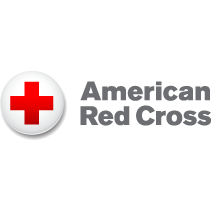
Blood donations often decline during the holidays when busy schedules, inclement weather and seasonal illnesses can make it more difficult for donors to make and keep donation appointments, but the need for blood doesn’t get a break for the holiday season. During the final two weeks of the year, the Red Cross needs to collect more than 175,000 blood and platelet donations for those depending on transfusions at hospitals and transfusion centers locally and across the country.
“When you donate blood or platelets, you are not only giving the gift of life to someone, you are also giving their loved ones hope for more holidays and joyous occasions together,” said Ryan Corcoran, director of donor recruitment of the Red Cross Mid-Atlantic and Appalachian Blood Services Regions. “To the parents of a child going through cancer treatment or family of an accident victim, that is a priceless gift.”
Blood donors of all types, particularly AB, O, A negative and B negative, and platelet donors are encouraged to make an appointment to donate and help ensure hospitals have the blood they need for patients this winter. As a special thank you for taking the time to donate, those who come out to give Dec. 23 through Jan. 3 will receive a long-sleeve Red Cross T-shirt, while supplies last.
Volunteers provide vital support
In addition to the 3 million volunteer blood and platelet donors who roll up a sleeve to give each year, Red Cross Blood Services also depends on about 84,000 volunteers across the country to fulfill its lifesaving mission. Volunteers serve in a number of roles, from hosting blood drives in their communities to transporting blood products for patients in need. Noel Macek is one such volunteer.
When many people are anxiously awaiting the delivery of their latest purchase, Macek is awaiting the next opportunity to deliver blood and platelets to local hospitals. He has volunteered as a transportation specialist for six years and drives about 14,000 miles each year.
“(Red Cross) Hospital Services knows that anytime that they have an emergency run, they can catch me answering the phone at home,” said Macek, who has also donated more than 16 gallons of blood. “My favorite part is to deliver blood products to a hospital or location and be able to bring a smile to people’s faces.”
Macek looks at the holidays like any other day, except that he wants to relieve other drivers so they can celebrate with their families. He knows patients depend on generous blood donations every day – even on holidays.
More information on local volunteer opportunities is available online at redcrossblood.org or by calling 1-800-RED CROSS.
How to donate blood
Donation appointments can be made by downloading the Red Cross Blood Donor App, visiting redcrossblood.org or call 1-800-RED CROSS (1-800-733-2767). The Red Cross urges donors who have made a commitment to donate during the holiday period to keep their appointments. Each appointment kept, and each donation given, offers hope to a patient in need.
A blood donor card or driver’s license or two other forms of identification are required at check-in. Individuals who are 17 years of age (16 with parental consent in some states), weigh at least 110 pounds and are in generally good health may be eligible to donate blood. High school students and other donors 18 years of age and younger also have to meet certain height and weight requirements.
Blood donors can now save time at their next donation by using RapidPass to complete their pre-donation reading and health history questionnaire online, on the day of their donation, prior to arriving at the blood drive. To get started and learn more, visit redcrossblood.org/RapidPass and follow the instructions on the site.
About the American Red Cross
The American Red Cross shelters, feeds and provides emotional support to victims of disasters; supplies about 40 percent of the nation’s blood; teaches skills that save lives; provides international humanitarian aid; and supports military members and their families. The Red Cross is a not-for-profit organization that depends on volunteers and the generosity of the American public to perform its mission. For more information, please visit redcross.org or visit us on Twitter at @RedCross.










